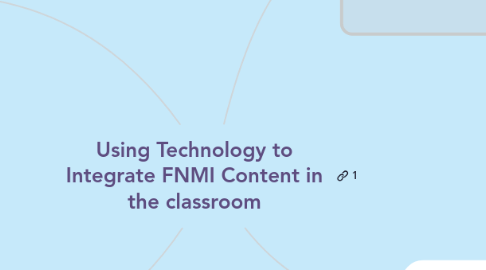Using Technology to Integrate FNMI Content in the classroom
by Destiny Rothenburg

1. technology for experiencing language
1.1. Recording devices can be used to share traditional stories in Indigenous languages. The Glenbow Museum provides some Blackfoot recordings. http://www.glenbow.org/blackfoot/EN/html/traditional_stories.htm
1.2. Video tutorials can be used to teach students how to write the characters associated with an Indigenous language.
1.3. Online dictionaries are available for learning , such as the digital Blackfoot Dictionary - developed at the University of Lethbridge.
2. technology for story work
2.1. Uploads of recordings of elders can be used in the classroom to directly expose students to the experiences of FNMI individuals.
2.2. A technology-based version of the Blanket Activity could be developed using video creating technology. A video developed to take viewers through the Blanket Activity would allow the instructor to participate alongside students.
3. technology for exploring ways of life
3.1. Interactive games can be used for students to explore components of FNMI cultures. https://www.pathoftheelders.com/teachers
3.2. Online journals and newspapers can be used to share FNMI current events with students. This will shape an understanding of the modern way of life for FNMI communities.
4. technology for understanding relationships with land
4.1. Google maps could be used to demonstrate locations of FNMI nations before settlers arrived and how the land has changed since colonialism in North America.
5. In general, there are many FNMI resources available online. If they can not be directly brought into the classroom in a technological sense, the technologization of FNMI content provides non-Indigenous educators with a unique opportunity to explore resources they may not have had access to in a pre-technology era.


